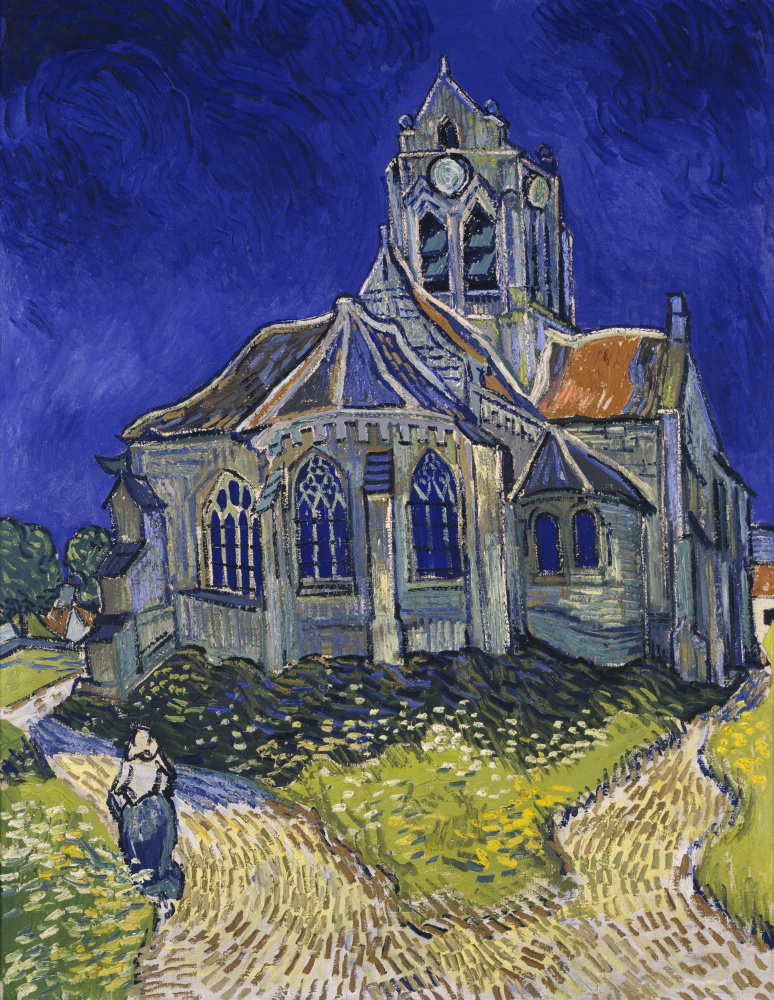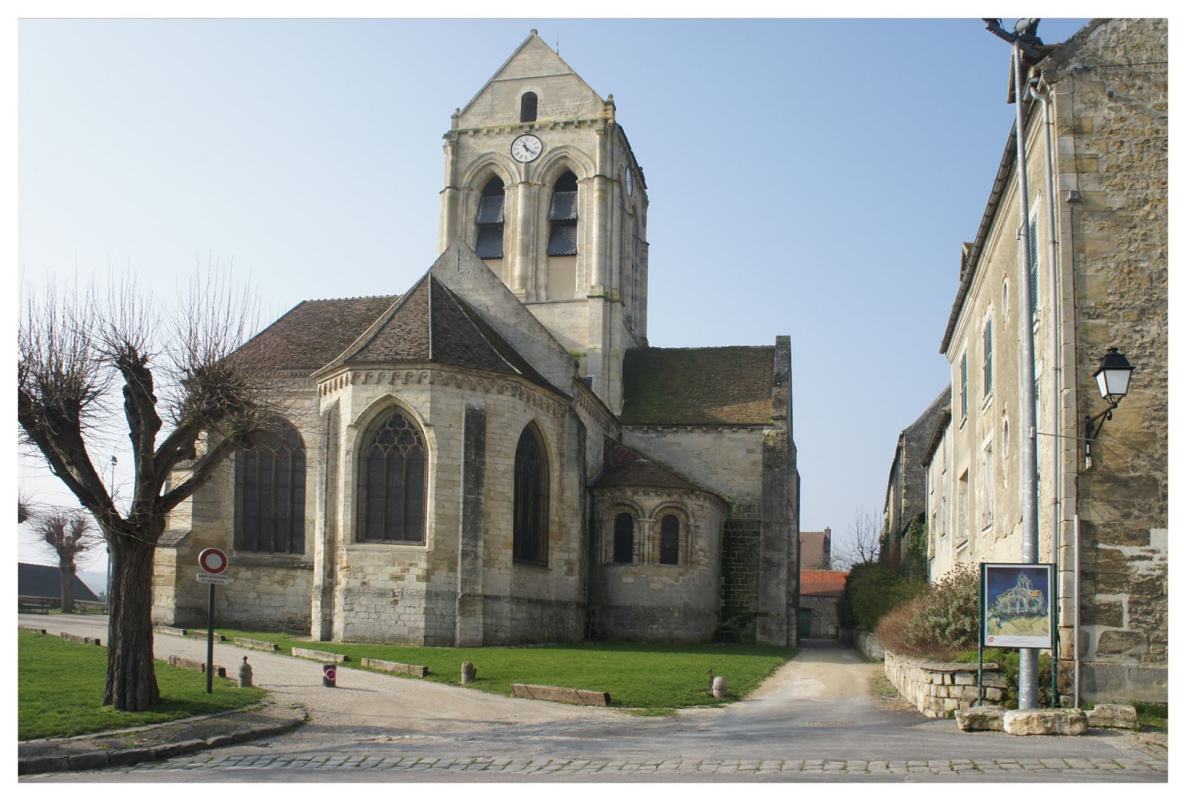log in
Enter site
Login to use Arthive functionality to the maximum
The Church in Auvers-sur-Oise
Vincent van Gogh • Painting, June 1890, 94×74 cm
Description of the artwork «The Church in Auvers-sur-Oise»
Annotation
Vincent spent a little more than two months in Auvers-sur-Oise, a village in the outskirts of Paris, treated by the Doctor Gachet. From the moment of Vincent’s arrival here on May 21, 1890 and his death from a suicidal shot in his chest on July 29, the artist painted like a madman. While staying in Auvers, he made about seventy paintings (over one per day) and a large number of drawings.
The Church in Auvers-sur-Oise, View from the Chevet is the only painting representing in full the church in Auvers, although its silhouette may also be distinguished in the landscape views of the whole village. It was most likely produced soon after artist’s arrival to the village for Vincent mentioned it in a letter to his sister Willemien van Gogh on Thursday, 5 June 1890 as an already made artwork,
“With that I have a larger painting of the village church – an effect in which the building appears purplish against a sky of a deep and simple blue of pure cobalt, the stained-glass windows look like ultramarine blue patches, the roof is violet and in part orange. In the foreground a little flowery greenery and some sunny pink sand. It’s again almost the same thing as the studies I did in Nuenen of the old tower and the cemetery. Only now the colour is probably more expressive, more sumptuous.”
This church, built in the 13th century in the early Gothic style still can be found in Auvers while travelling in the footsteps of Vincent van Gogh. The austere gray building became under the painter's brush a bizarre vision, as if streamed by lava or mud. Taken as a whole, the painting gives an impression of an unbearable heat that ‘melts’ the church and it looks dissolving and deliquescing. But despite the entire landscape is brightly lit by the sun, the building is rendered in its own shadow, completely devoid of light. In one of his letters to Theo, Vincent, being disillusioned by his experience of organized religion long ago, recalls the scene from Shakespeare's King Henry IV comparing the dark emptiness inside a church with "empty and unenlightened preaching."
Author: Eugenia Sidelnikova
Vincent spent a little more than two months in Auvers-sur-Oise, a village in the outskirts of Paris, treated by the Doctor Gachet. From the moment of Vincent’s arrival here on May 21, 1890 and his death from a suicidal shot in his chest on July 29, the artist painted like a madman. While staying in Auvers, he made about seventy paintings (over one per day) and a large number of drawings.
The Church in Auvers-sur-Oise, View from the Chevet is the only painting representing in full the church in Auvers, although its silhouette may also be distinguished in the landscape views of the whole village. It was most likely produced soon after artist’s arrival to the village for Vincent mentioned it in a letter to his sister Willemien van Gogh on Thursday, 5 June 1890 as an already made artwork,
“With that I have a larger painting of the village church – an effect in which the building appears purplish against a sky of a deep and simple blue of pure cobalt, the stained-glass windows look like ultramarine blue patches, the roof is violet and in part orange. In the foreground a little flowery greenery and some sunny pink sand. It’s again almost the same thing as the studies I did in Nuenen of the old tower and the cemetery. Only now the colour is probably more expressive, more sumptuous.”
This church, built in the 13th century in the early Gothic style still can be found in Auvers while travelling in the footsteps of Vincent van Gogh. The austere gray building became under the painter's brush a bizarre vision, as if streamed by lava or mud. Taken as a whole, the painting gives an impression of an unbearable heat that ‘melts’ the church and it looks dissolving and deliquescing. But despite the entire landscape is brightly lit by the sun, the building is rendered in its own shadow, completely devoid of light. In one of his letters to Theo, Vincent, being disillusioned by his experience of organized religion long ago, recalls the scene from Shakespeare's King Henry IV comparing the dark emptiness inside a church with "empty and unenlightened preaching."
Author: Eugenia Sidelnikova



